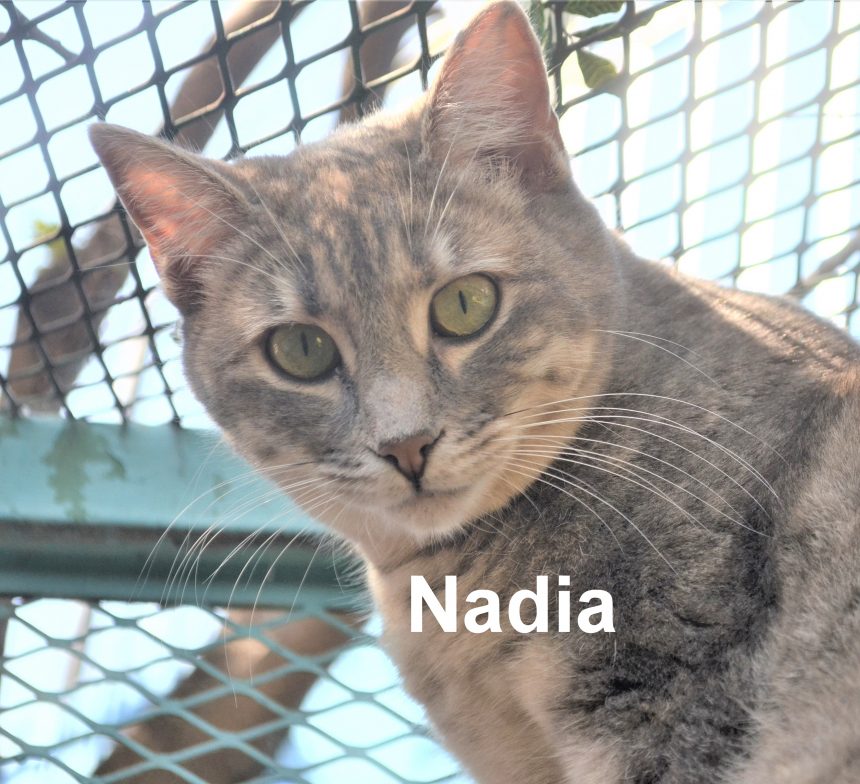By Jayn Corral
Running an animal shelter can be a tricky and very complicated endeavor. Add to that the communal living aspect for cats such as what exists at SPA. We have group living arrangements—our cats are not caged. We create separate spaces for cats of different ages and temperaments. Just like people, cats have a variety of personalities, needs, and preferences. Put them all together, and you never know what will happen.
Having arrived at only three months old and spending more than two years at the SPA, Nadia has seen many cats come and go. She loves people and is a wonderful cat in all ways except one. Nadia will accept and become friends with some new cats and terrorize others. We cannot figure out why.
Then there is Ritz, a sweet one-year old. She is friendly with cats and volunteers, yet the sight of our veterinarian makes her go crazy—really insane! We try our best to make the experience tolerable for her. Nothing seems to help yet, but we’re working on it. In the meantime, Dr. Omar Córdova is not taking it personally.
Feline aggression is hostile or violent behavior intended to dominate or intimidate. There are several types of feline aggression, including play, fear, petting-induced, redirected, pain-induced, status induced, territorial, maternal, inter-cat, and idiopathic. An aggressive cat will show signs such as dilated pupils, flat ears or whiskers and erect puffed twitching tail. Aggression develops gradually, usually between eight to 24 months of age, beginning with hissing and growling, escalating to swatting and chasing, then attacking and fighting. Catfights are seldom fatal, but the wound has an 80 percent chance of becoming infected, which, if left untreated, can lead to death.
When cats are surrendered to shelters because of problems with their behavior, the behavior at issue is usually aggression. A cat can victimize another cat, people, or in the case of re-directed aggression, anyone within striking distance. If not stopped, aggressive behavior can become a learned and accepted behavior. So, it is very important to recognize and manage it.
Managing aggressive behavior begins with a proper introduction to the new situation, people, or other pets. Typically, the newcomer is the victim so he should be given his own safe haven, separate from other cats for a few days or even longer, if necessary. Using treats, a shared toy, and exchanging bedding are ways to gradually get the cats to accept each other. It is never appropriate to scold or punish the aggressive cat. A squirt bottle with water will let the cat know the behavior is not acceptable. If you have an aggressive cat or end up adopting one, the situation is challenging, but not hopeless.
Lovely cats, Nadia and Ritz are available for adoption at the SPA, Los Pinos 7, 415 152 6124. Nadia might be best as the only cat in the home and Ritz needs to learn that the vet is there to help her. Adoption hours are Mon.-Sat., 11am-2pm.

